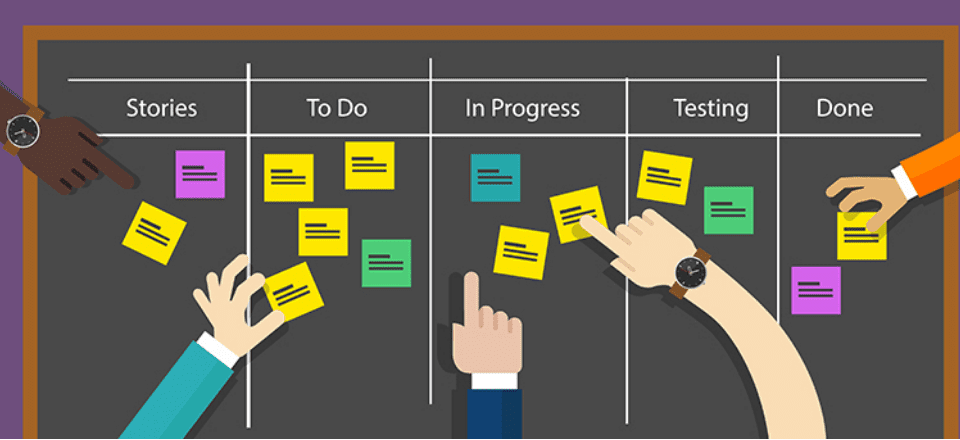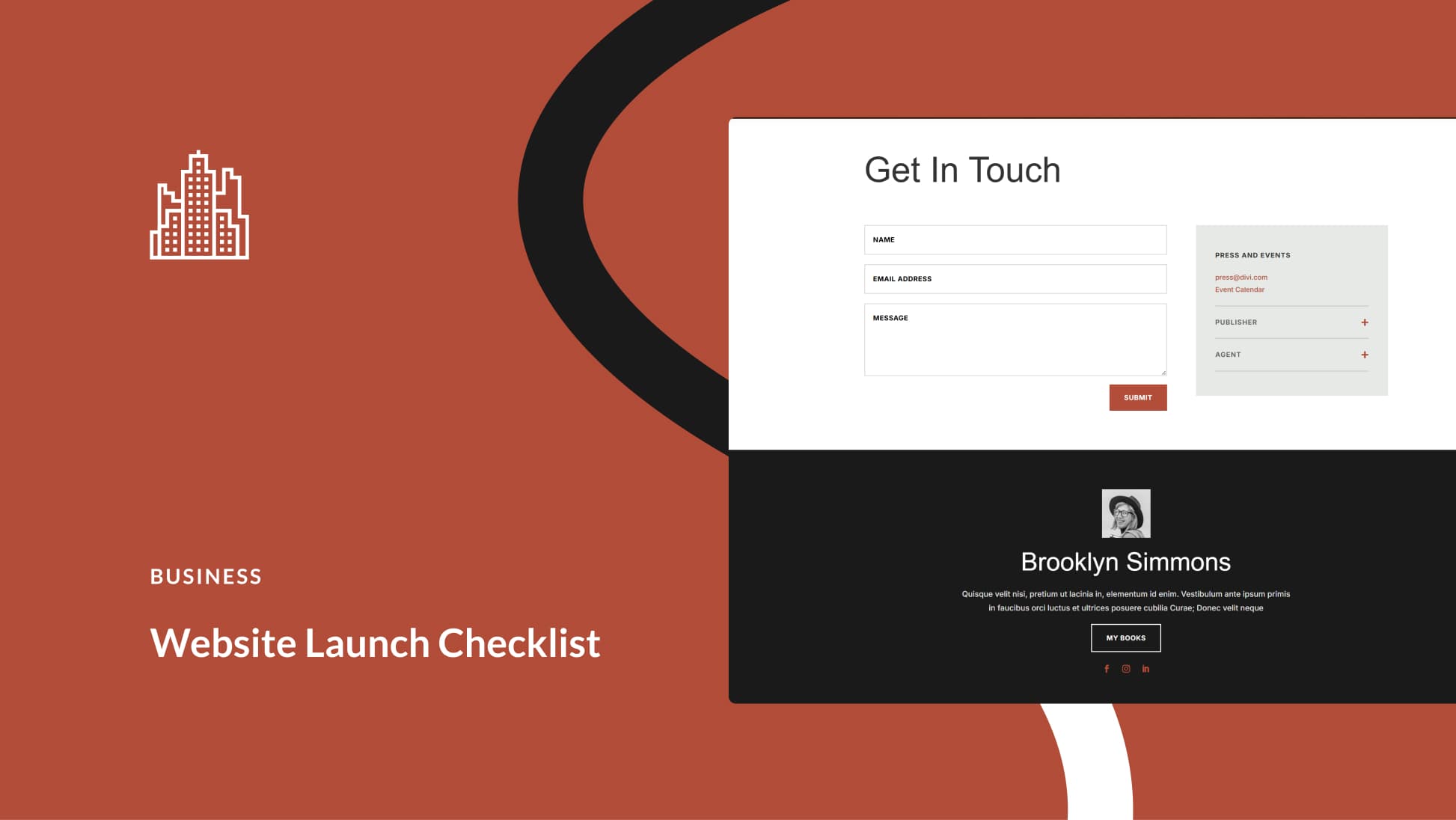The modern world is one where people expect results fast. For example, WordPress core manages to release updates at a breakneck pace due to demand, and they’re not the only software company to do so. If you want your team to rise to this level of efficiency when it comes to product releases, you need to apply the right management approach.
“Agile” project management is all about rapid-fire iterations, and breaking down large projects into manageable parts. The best part is, it doesn’t just work for software-related projects. In this article, we’re going to give you an introduction to Agile project management, its benefits, and how it works.
Let’s get to it!
An Introduction to Agile Project Management
Imagine your team is tasked to develop a “simple” Content Management System (CMS) from scratch. You have a list of features to include, such as post management, support for multiple authors, a text editor, and more.
There are almost an infinite number of ways you can approach a project of that scope. For example, you could develop the entire system at once and only show the client when you have a Minimum Viable Product (MVP). It’s not necessarily a bad approach, but it means a long time can pass between the project’s beginning and the demonstration phase.
A more “agile” approach (wink wink) could instead focus on faster project iterations. You could break down those requirements into the projects core, then move on to working on each individual feature.
The basic tenet of Agile project management is quick iteration. This means breaking down projects into small components you can tackle in quick succession. Every time you complete one of these iterations, you review it alongside your team and clients.
However, it’s important to understand that Agile project management is more of a philosophy than a methodology. In practice, there are a lot of Agile methodologies you can follow, and we’ll introduce you to some of them shortly. First, let’s talk about what the benefits of Agile philosophy are.
The Benefits of an Agile Approach
The primary benefit of Agile project management is right within the name. Overall, the entire philosophy is about helping teams deliver projects faster. However, there are a lot more benefits to an Agile approach beyond speed, such as:
- Stopping projects from going off the rails. Since you’re working in incremental amounts and reviewing your progress at every step, it becomes easier to catch problems before they grow too big.
- You can tackle complex tasks more efficiently. Usually, large projects can be very intimidating, but the “baby steps” approach espoused by Agile management can make them less daunting.
- You get tons of feedback. After every iteration, you’re supposed to stop and review progress alongside your teams. This means you get a lot of feedback at every step, and the entire team on the same page.
- It’s highly adaptable. Agile project management’s iterative approach means it’s easier to introduce new features or modify them during the development process.
In fact, a great tagline for Agile project management is that it’s all about quick iterations with lots of constant feedback. Those qualities make Agile a perfect fit for software and web development projects, where there’s usually a lot of incremental change going on. However, it can also be a great fit for other types of projects and fields.
For example, an Agile approach to a marketing campaign could be broken down as follows:
- Identify the goals you want your campaign to accomplish.
- Break down those goals into individual tasks and assign them (i.e. design a logo, come up with a slogan, write copy for a specific segment).
- Review the results of each task and run user tests to determine their level of success.
- Move on to the next task.
Ideally, the entire process would be rapid. One way some teams stay on track is by using collaboration tools such as Trello, and giving themselves timelines. To offer some more context, let’s move on to talking about specific Agile methodologies.
3 Examples of Agile Methodologies
Every Agile methodology shares the fundamentals we’ve discussed so far. However, each of them enables you to tackle projects using a different approach. Here are some of the most popular options:
- Scrum. We’ve talked about Scrum in the past – with this methodology, the person in charge sets a product backlog and establishes priorities. Then, each team gets to work on a “sprint”, by the end of which they should deliver a new iteration.
- Lean software development. This methodology is all about stripping unnecessary functionality and providing end-customers with more value. When it comes to software development, Lean methodology also prioritizes heavy testing during the process.
- Extreme Programming (XP). Agile development is, by its nature, pretty darn fast. However, XP methodology takes it one step further, with sprints that typically last between one and three weeks. The idea is that through faster iteration and a high level of user involvement, projects can be run much more efficiently.
Agile project management can be a great fit in most situations where you’re running a project involving a team. The greater the complexity of the project, the more you can benefit from Agile.
However, it’s up to you which methodology you choose. There are plenty more options beyond the ones we’ve covered so far. Overall, the core Agile tenets tend to remain the same, but certain aspects, such as the length of sprints and how involved users are can vary.
We encourage you to explore some more Agile variants to see if you find one that fits your style. However, in the meantime, let’s dig into the actual process so you know what to expect.
How to Get Started With Agile Project Management (4 Steps)
We’ve talked a lot about the Agile methodology and how it works in broad terms. Now, let’s take a closer look at what the process can look like for real life scenarios.
Step #1: Create a Product Roadmap and Set a Timeline for Releases
Before you even write a single line of code, you need to have a full picture of what you’re working on and what your goals are. This means knowing:
- What the end product should be.
- What features it needs to include.
- Who is it designed for.
- What makes your product unique.
This step involves very high-level decisions, so aside from you, team leaders and clients should be there to develop a game plan. Ultimately, you need to walk out of the initial meeting(s) with a rough product roadmap.
To build upon our earlier example of a client wanting a CMS, here’s what the previous list might look like:
- What the end product should be: A CMS geared towards blogging.
- What features it needs to include: Post management, support for multiple authors, a user hierarchy, and a text editor.
- Who is it designed for: Bloggers with little to no web development experience.
- What makes your product unique: A focus on ease-of-use and accessibility.
In the real world, the product roadmap would be a lot more fleshed out, of course. You’ll want to pay special attention to the features the client wants, as those are going to be your primary focus during sprints.
It’s important to be realistic at this stage about what is and isn’t possible. You also want to give your team and clients an idea about how often you expect to release new iterations. Usually, sprints last about a month, but your timeline will depend on the complexity of the tasks you want to tackle.
Step #2: Break Down What You Need to Accomplish and Run Your First Sprint
Once you have a product roadmap in place, you can start to break down the big features you need to implement into smaller tasks. Let’s say, for example, you want a team working on the core of your CMS. This could include the following tasks:
- Building an admin area.
- Creating a basic user management system.
- Developing a barebones implementation of a publishing system.
Each of those tasks can, in turn, be broken down into even simpler ones. For this process to run smoothly, you’ll want your teams to have access to collaboration tools such as Trello and Slack. Collaboration is, after all, what makes Agile project management possible. The tools you pick here aren’t really important, as long as there’s something in place to enables your team to mark their progress and you to overview it.
Once your first set of tasks are “ready”, it’s time to assign them and start your first sprint, which is Agile-speak for each iteration’s development process. At the end of each sprint, you should have a new iteration of your project, with more features with each successive release.
Step #3: Run Daily “Standups” to Keep Teams on Track
There are hiccups and issues during every project’s development process. Agile management encourages you to stay on top of everything that’s going on by running quick daily meetings consisting of three questions:
- What tasks did you finish since the last meeting?
- What are you going to be working on today?
- Did you run into any problems during the process?
Don’t be scared off by the idea of regular meetings. With an Agile mindset, you’re not supposed to spend hours listening to everyone talking. The goal is for everyone to have an up-to-date idea of how the project is going and address any potential issues immediately after they pop-up.
When we say “daily” meetings, take it more as a suggestion than a rule of thumb. You can vary the frequency of your meetings to suit your own style. Just make sure they happen often, and you hit all three points we’ve laid out.
Step #4: Wrap Up Your Sprint and Review its Results
All good sprints must come to an end eventually. Once you hit each release date within your timeline, it’s time to take a look at your project’s new iteration. In an ideal world, you’d complete the implementation of multiple “minor” features each release, with major ones being a bit less frequent. However, the progress you make will largely depend on your team, how well you keep them in line, and what your project is.
At this stage, you need to review if you met all the goals you set out to accomplish during the latest sprint. If you didn’t meet one, you need to ask why and figure out how to prevent it from happening again. The entire team should be present for this, as well as your end user(s).
Although this was the last step of our guide, it’s only the beginning of your Agile road. Few projects are ready in a single leap, so once your review is done, prepare for the next sprint and repeat the process until you hit all of your goals.
Conclusion
The more complex a project is, the greater the chance for development to get drawn out. The best way to come at large projects is to break them down into their component parts. In addition, you also want to make sure everyone knows what their tasks are, and to stay on top of their progress.
In a nutshell, this is what Agile project management is all about. If you want to implement it for your next project, here are a few steps to get you started:
- Create a product roadmap and set a timeline for your releases.
- Break down what you need to accomplish and run your first sprint.
- Run daily standups to keep teams in track.
- Wrap up your sprint and review its results.
Do you have any questions about Agile project management in general? Let’s go over them in the comments section below!
Article thumbnail image: Bakhtiar Zein / shutterstock.com









I love this methodology and I am trying to incorporate it into my daily life. I can see how this is beneficial for teams. However, it’s just me. One of the benefits is how it keeps everyone motivated and the testing portion at the end of the phase. But for an individual, I am wondering how can that be simulated? Any ideas?
Good question, and it’s one you’ll find asked a lot when discussing project management. It may be that Agile itself isn’t appropriate for your needs. However, there’s nothing to stop you from adapting its principles, or looking into other systems such as Kanban or even Extreme Programming (XP). A quick search for ‘project management for individuals’ could reap you the rewards you’re after. 🙂
Thank you for sharing this article
You are welcome Koosha! 🙂
I’ve read The Manifesto for Agile Software Development a few times and I don’t recall it talking about management. Most of the signatories seem to express a desire for self-organization. Isn’t that the antithesis of being managed?
You make a good point, Dana. However, if you think about “management” not as a traditional ‘command and control’ setup but more as an organizational tool for development, the principles may come sharply into focus.